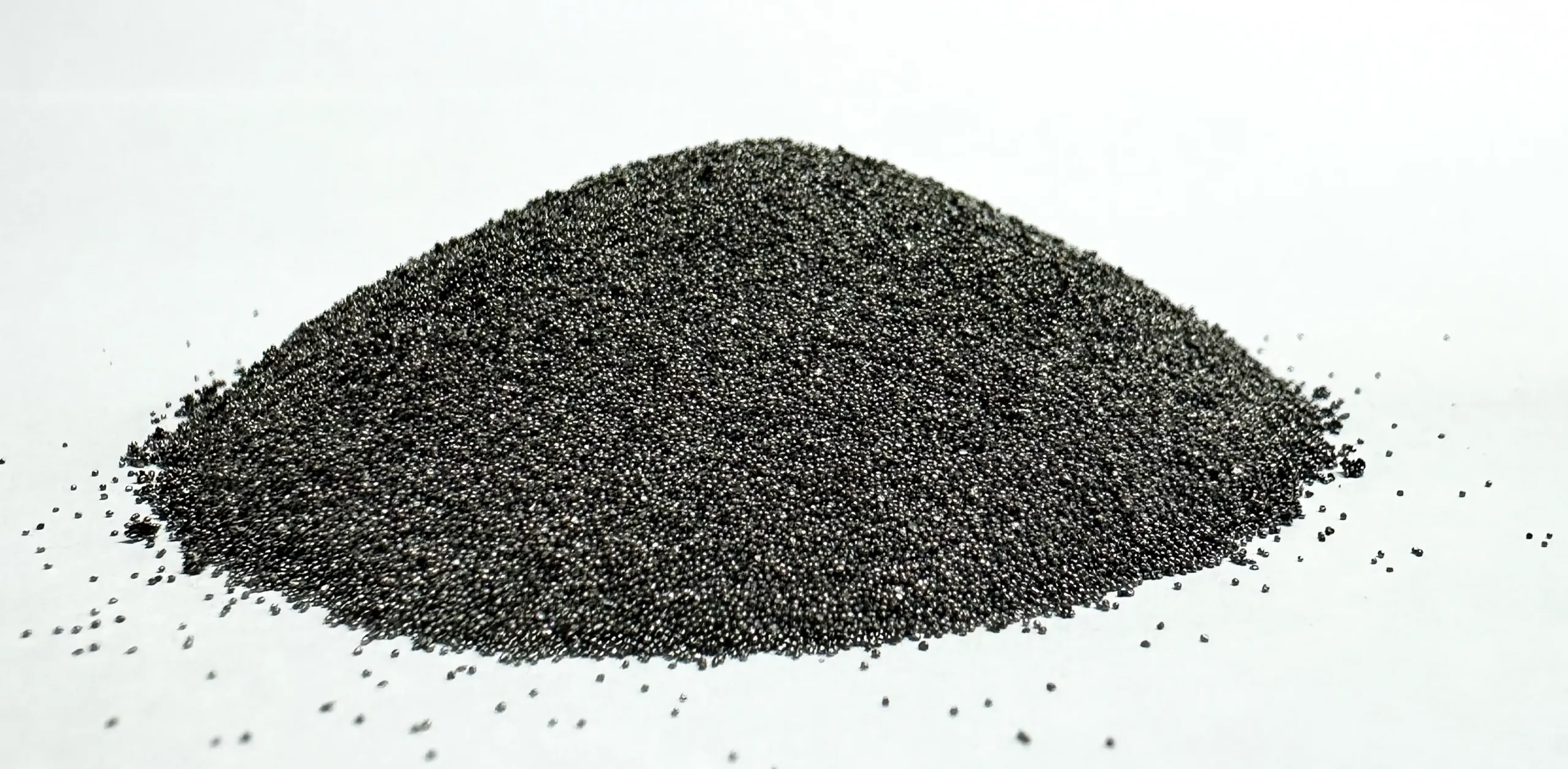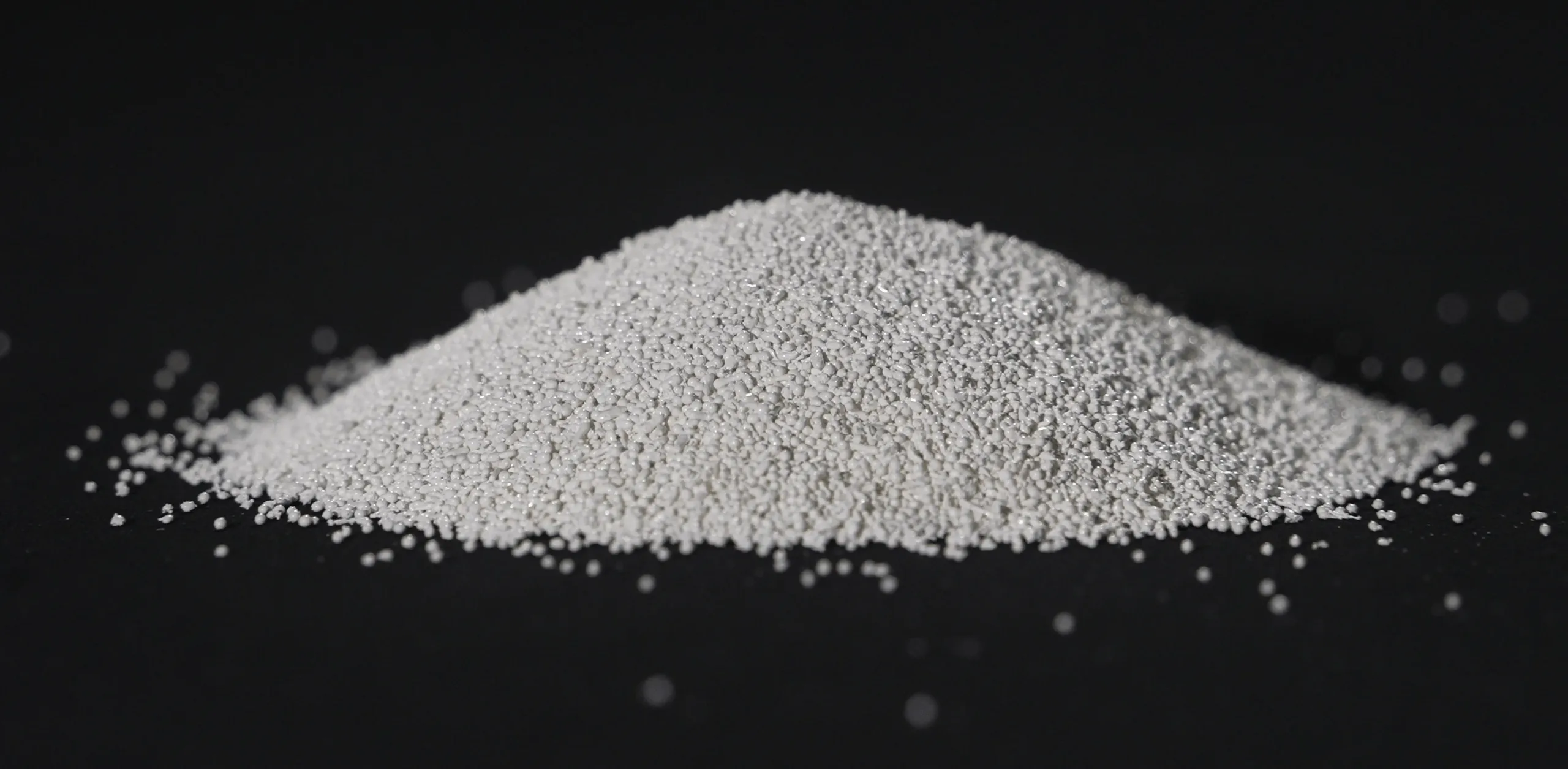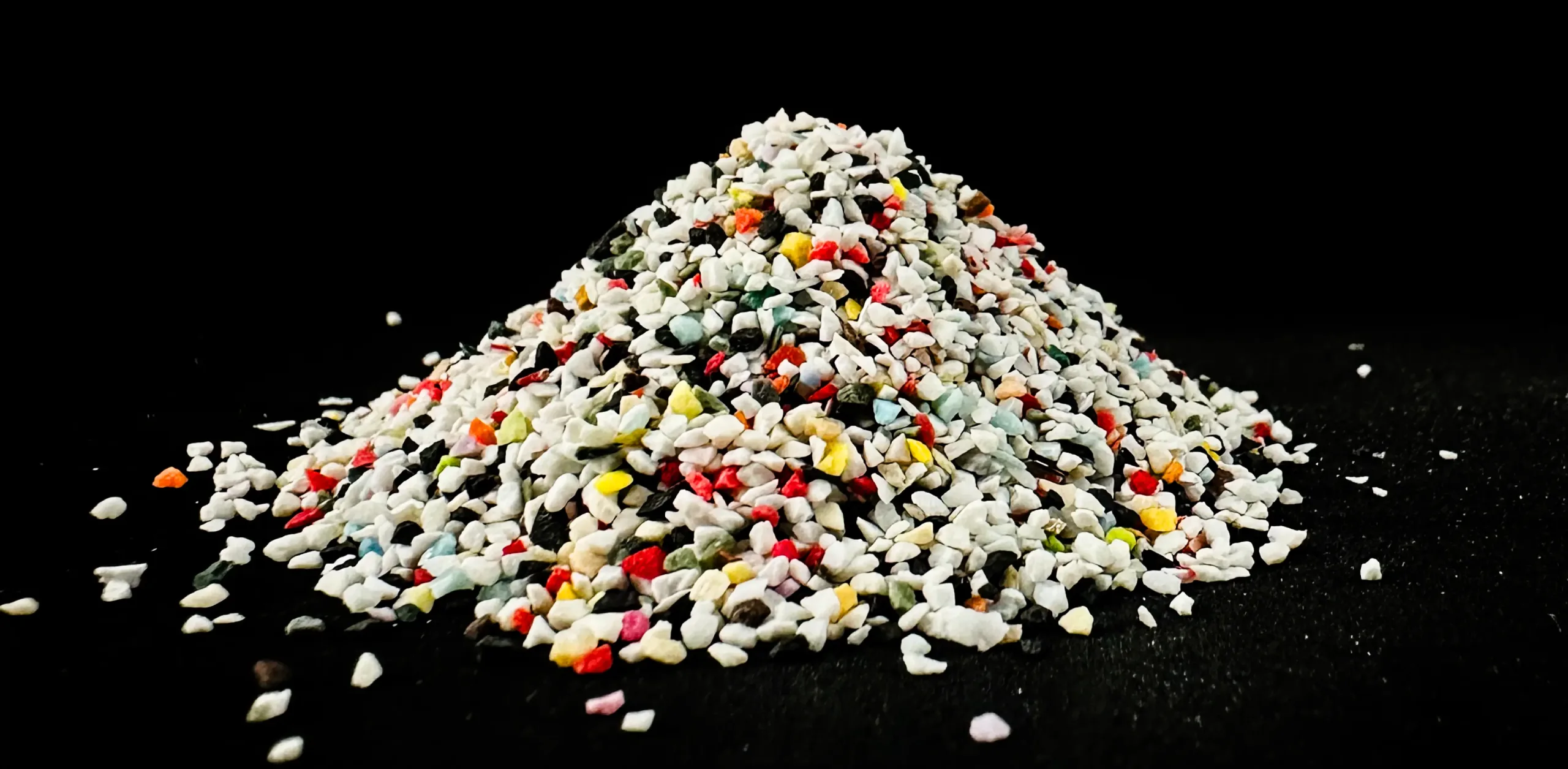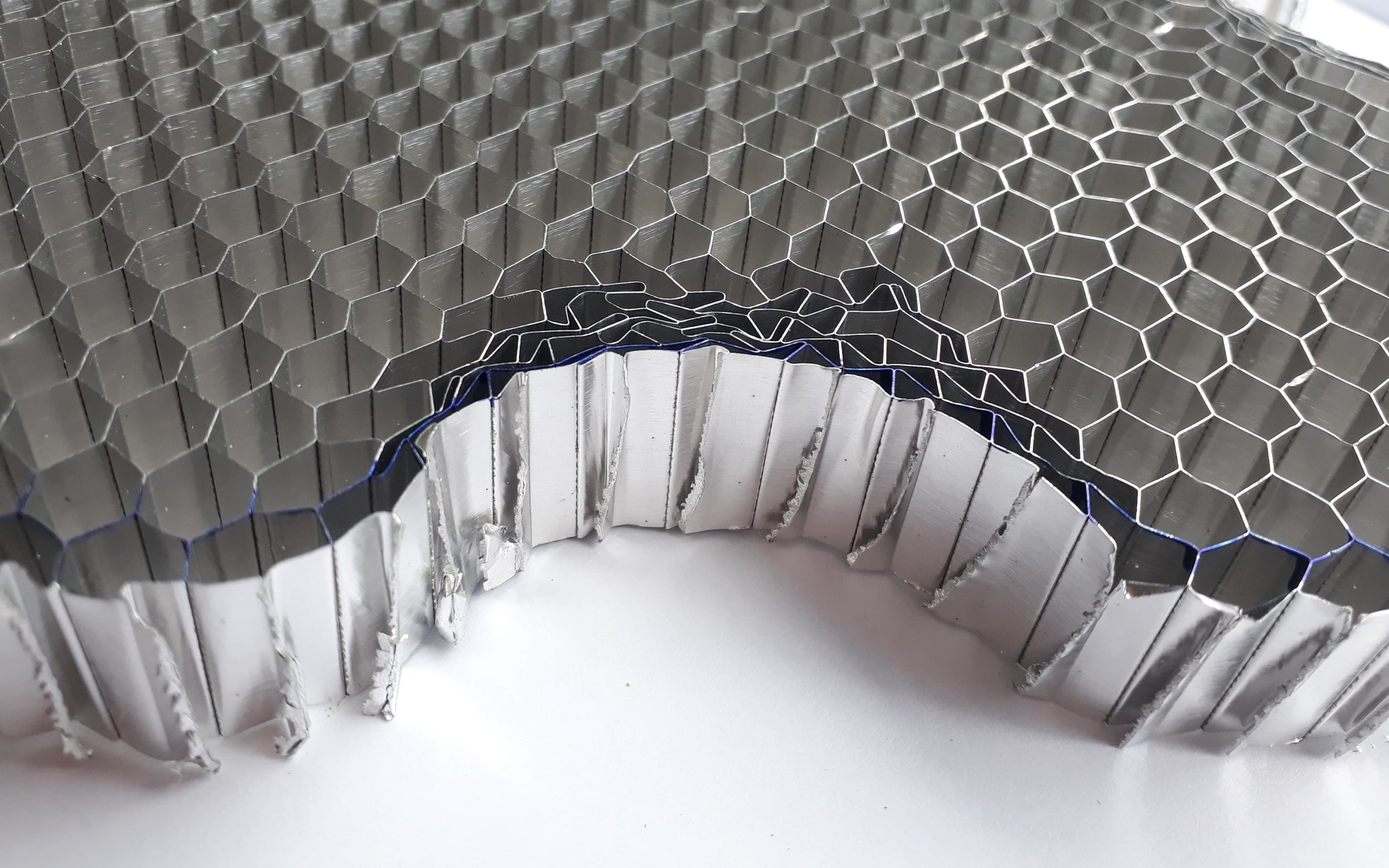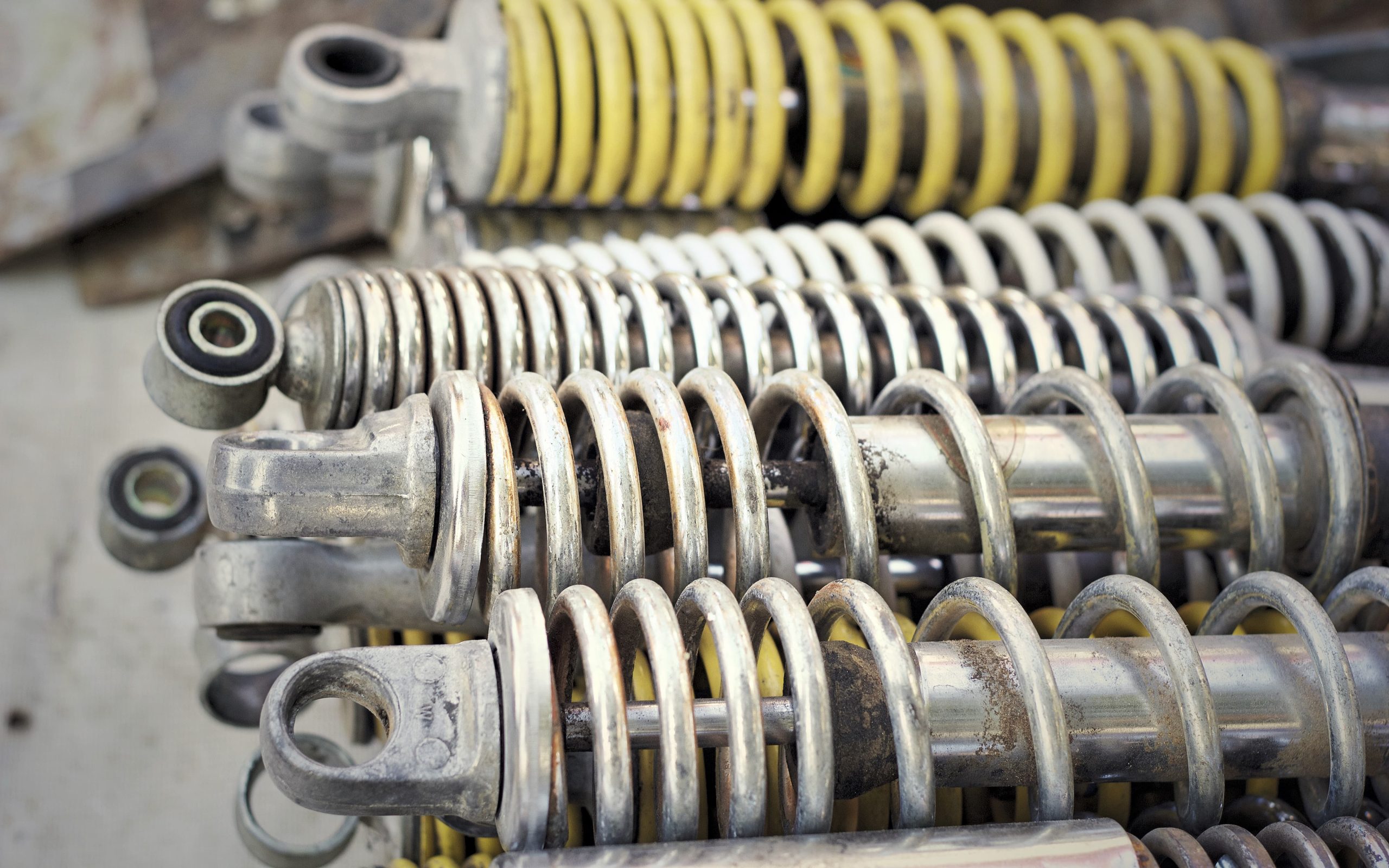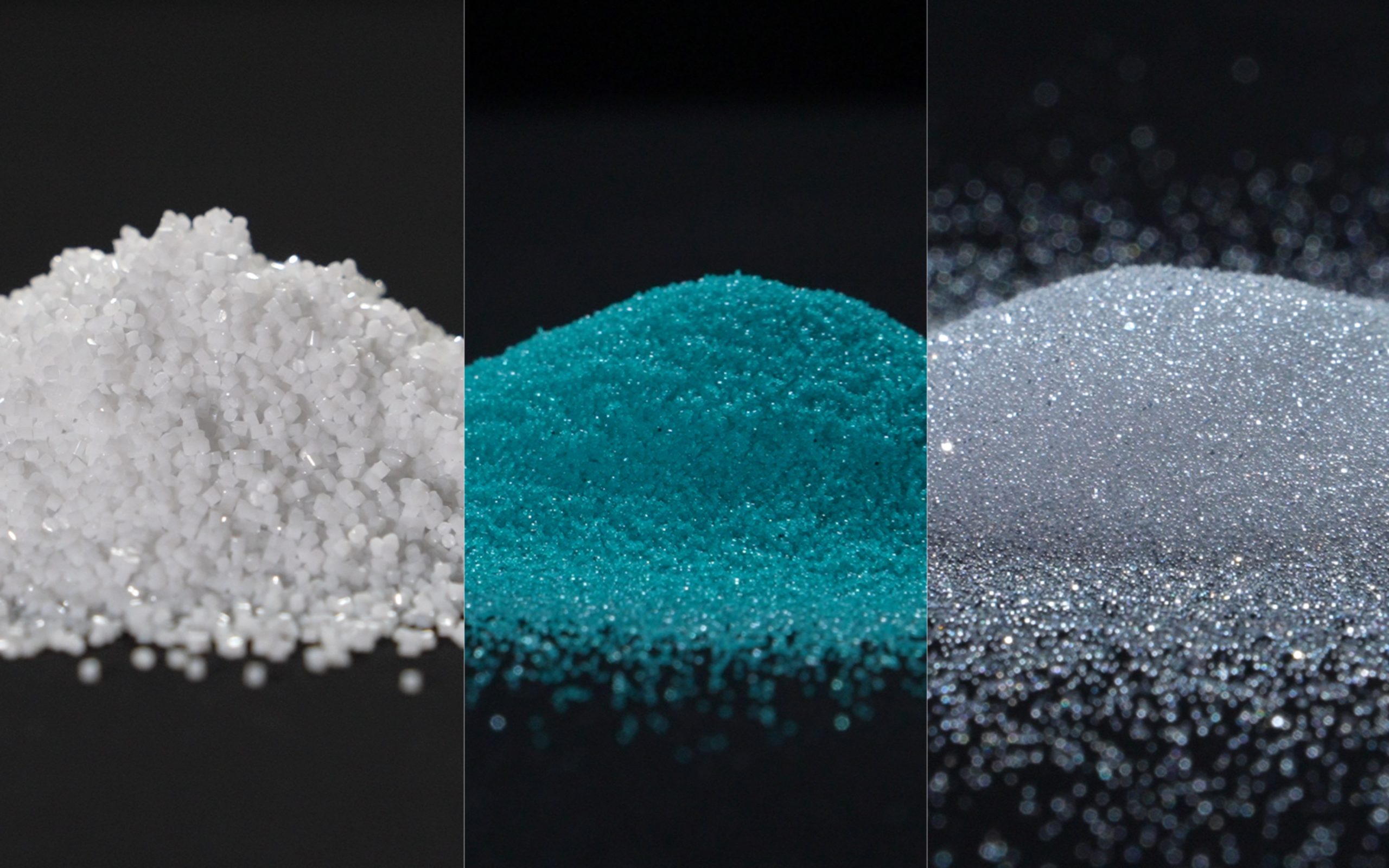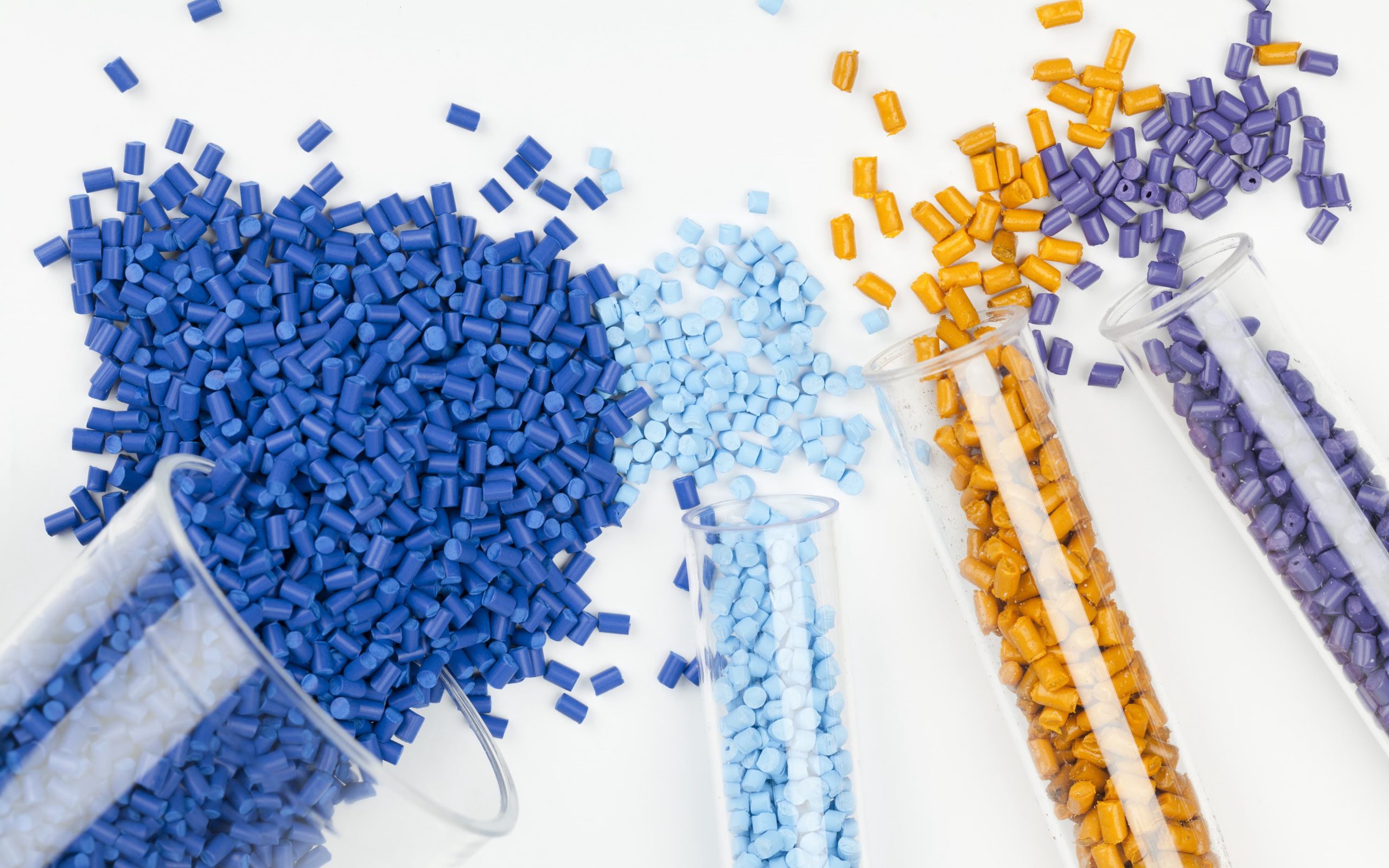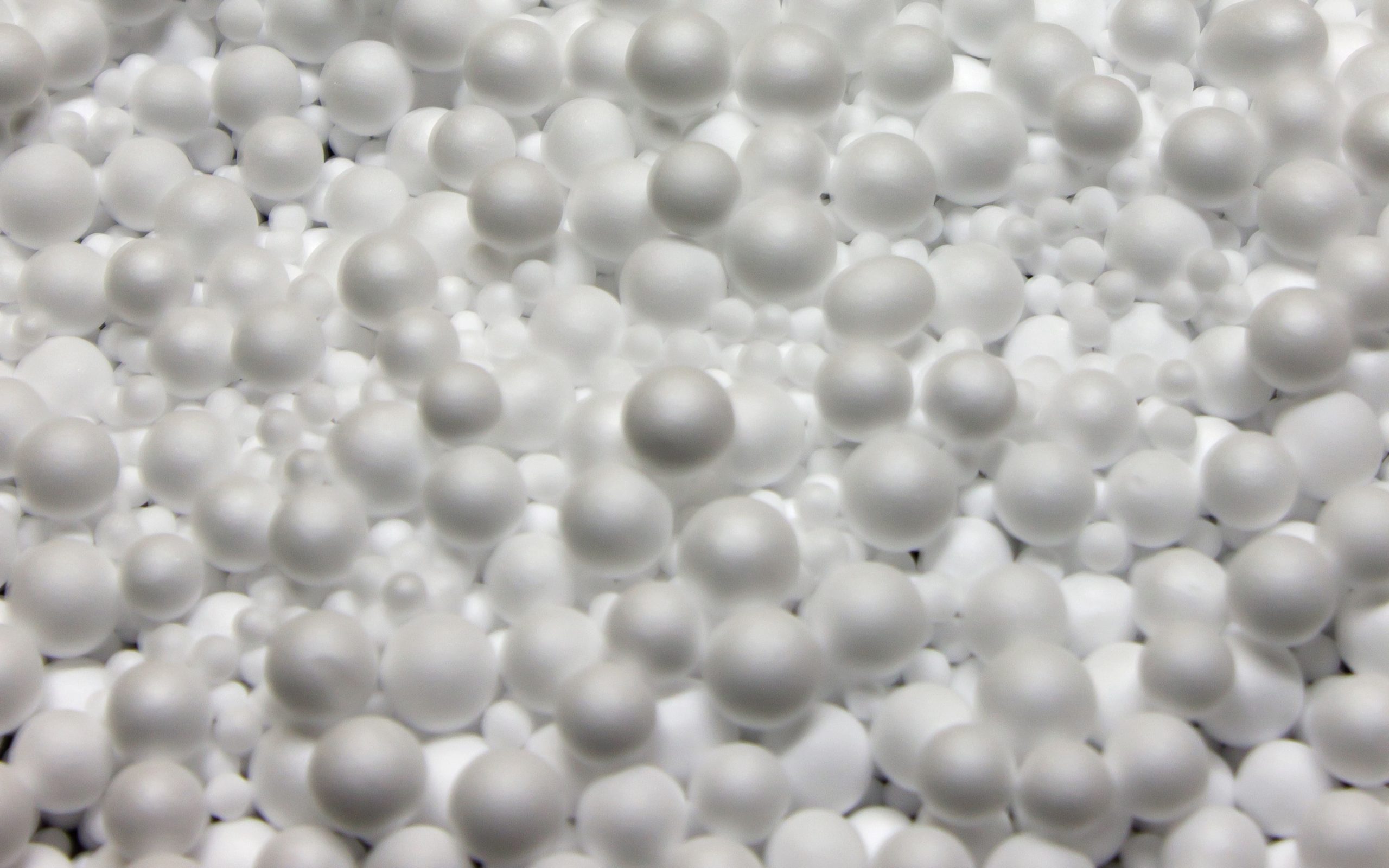The difference between sandblasting and shot peening
October 28, 2024
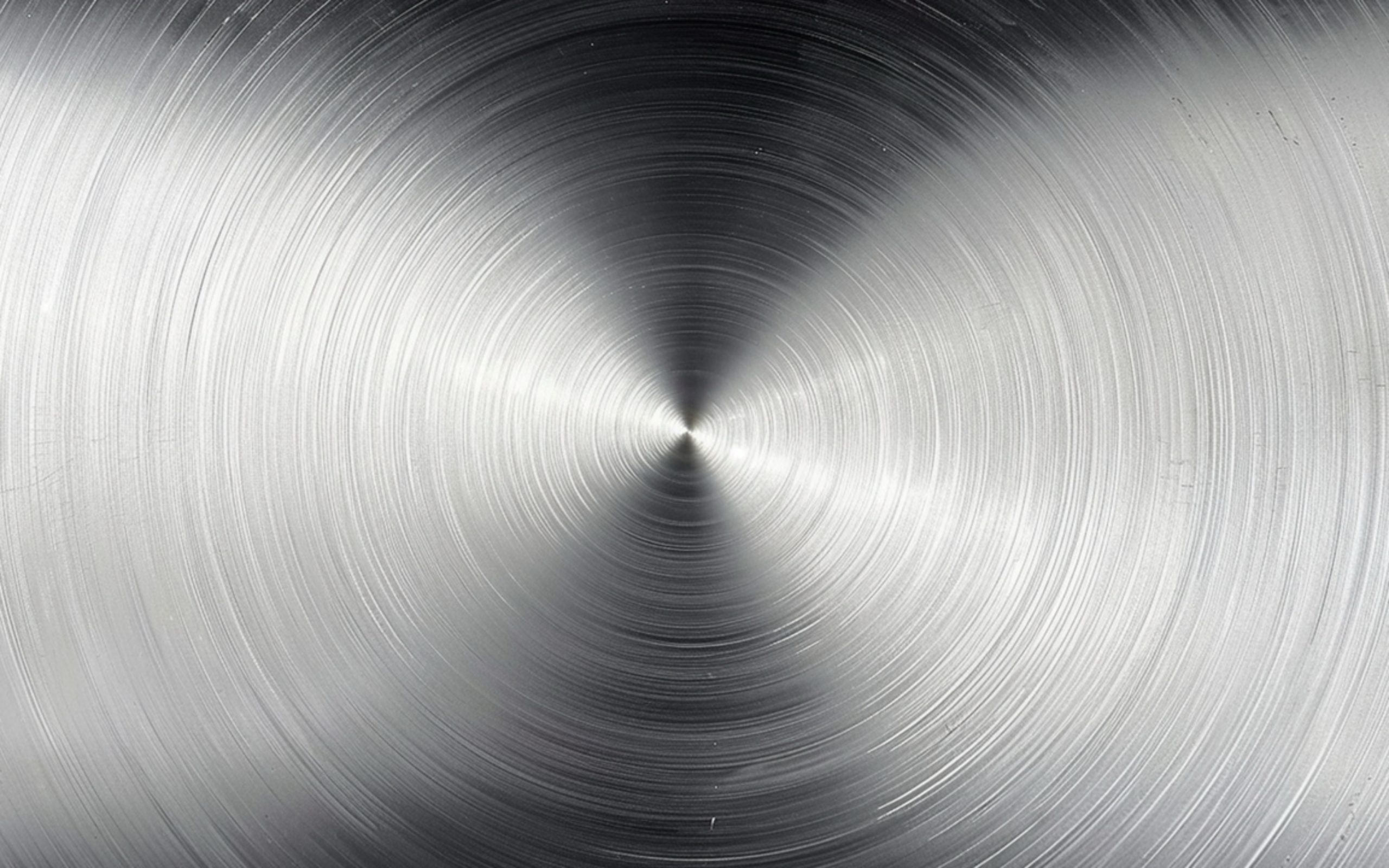
As the two main surface treatment processes, sandblasting and shot peening each have unique functions and application areas. However, for most people, the difference between the two is not intuitive. Although they both involve the use of media to treat the surface of the workpiece, there are significant differences between the two in terms of purpose, operation method, and applicable media.
This article aims to analyze the core differences between sandblasting comprehensively and shot peening, deeply explore the applicability of different media, and demonstrate their actual effects through specific industry application cases. In addition, the article will also focus on the development trends of sandblasting and shot peening at the forefront of technology, hoping to provide readers with a scientific and systematic understanding framework to help choose the appropriate surface treatment method in practical applications.
The core difference between sandblasting and shot peening
Although sandblasting and shot peening are both processes that use high-speed jet media to treat the surface of the workpiece, their core purposes and application scenarios are very different. This difference is mainly reflected in the demand for surface treatment: sandblasting is mainly used for cleaning, removing surface defects, and increasing surface roughness, and is commonly used in cleaning and coating preparation of metal and other hard material surfaces; while shot peening focuses on increasing the fatigue strength and stress corrosion resistance of workpieces by increasing surface compressive stress, and is especially suitable for high-stress, high-fatigue metal parts.
- The core goals and characteristics of sandblasting
The main task of sandblasting is to clean the surface of the workpiece and provide a good adhesion foundation for subsequent processes. The basic principle is to use compressed air or mechanical devices to spray granular media at high speed onto the surface of the workpiece and remove surface impurities, rust, old paint layers, etc. through physical friction to obtain a clean surface.
In sandblasting, different media and process parameters determine its treatment effect. For example, aluminum oxide media used for metal surface sandblasting can effectively remove oxides and contaminants, while glass beads are suitable for light polishing and can achieve a smoother surface effect. These characteristics make sandblasting an indispensable step in fields such as metal manufacturing, construction, and mechanical equipment maintenance, providing an ideal surface state for subsequent coating or anti-corrosion treatment.
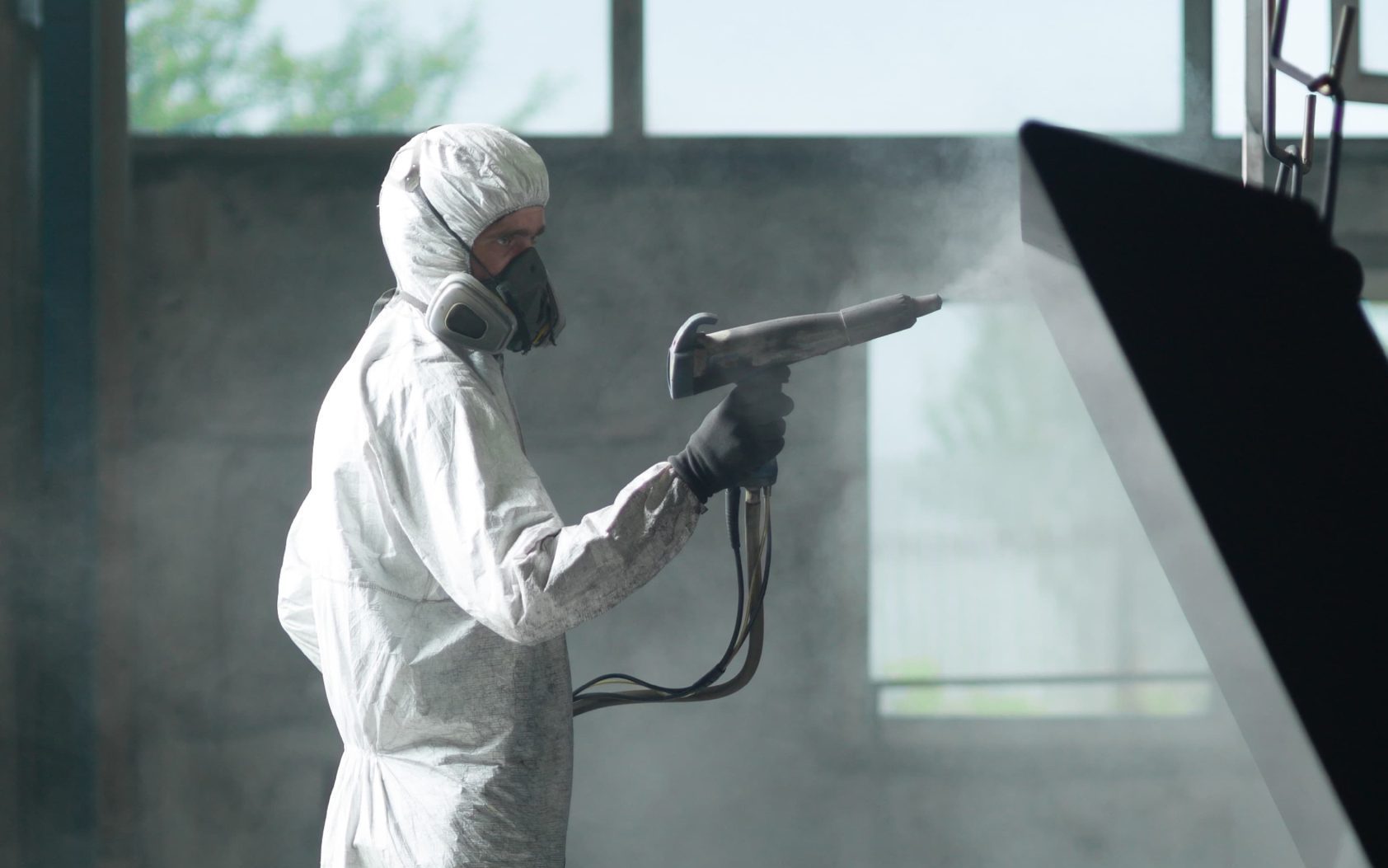
Sandblasting Demonstration
The characteristics of sandblasting include:
- Efficient cleaning: remove surface impurities such as rust, scale, and old paint.
- Adjust surface roughness: provide different surface textures according to process requirements to increase the adhesion of coatings or adhesives.
- Controllable surface effect: obtain the required surface finish or roughness by selecting different media and pressure control.
- Core goals and characteristics of shot peening
Compared with sandblasting, the purpose of shot peening is more focused on strengthening the metal surface. The principle is to impact the surface of the workpiece with a high-speed spherical medium, produce small and uniform plastic deformation, and form a compressive stress layer on the surface. This compressive stress can resist the crack propagation caused by tensile stress, thereby improving the fatigue life and corrosion resistance of the workpiece. This process is particularly common in high-stress metal parts such as automotive transmission parts, aircraft fuselages, and landing gears.
The media generally used in the shot peening process include spherical media with higher hardness, such as steel shots and ceramic shots, to ensure that there will be no fragmentation during the impact process and to form a stable compressive stress distribution. Compared with the surface treatment effect of sandblasting, shot peening focuses more on the enhancement of internal structure, so it is mainly used in scenarios with high requirements for fatigue life and crack resistance.
The characteristics of shot peening include:
- Improve fatigue life: delay the crack propagation caused by tensile stress through surface compressive stress.
- Increase stress corrosion resistance: treat the surface of the material with compressive stress to keep it stable in a corrosive environment.
- Efficient and uniform compressive stress distribution: forms a lasting strengthening effect on high-load and high-fatigue parts.
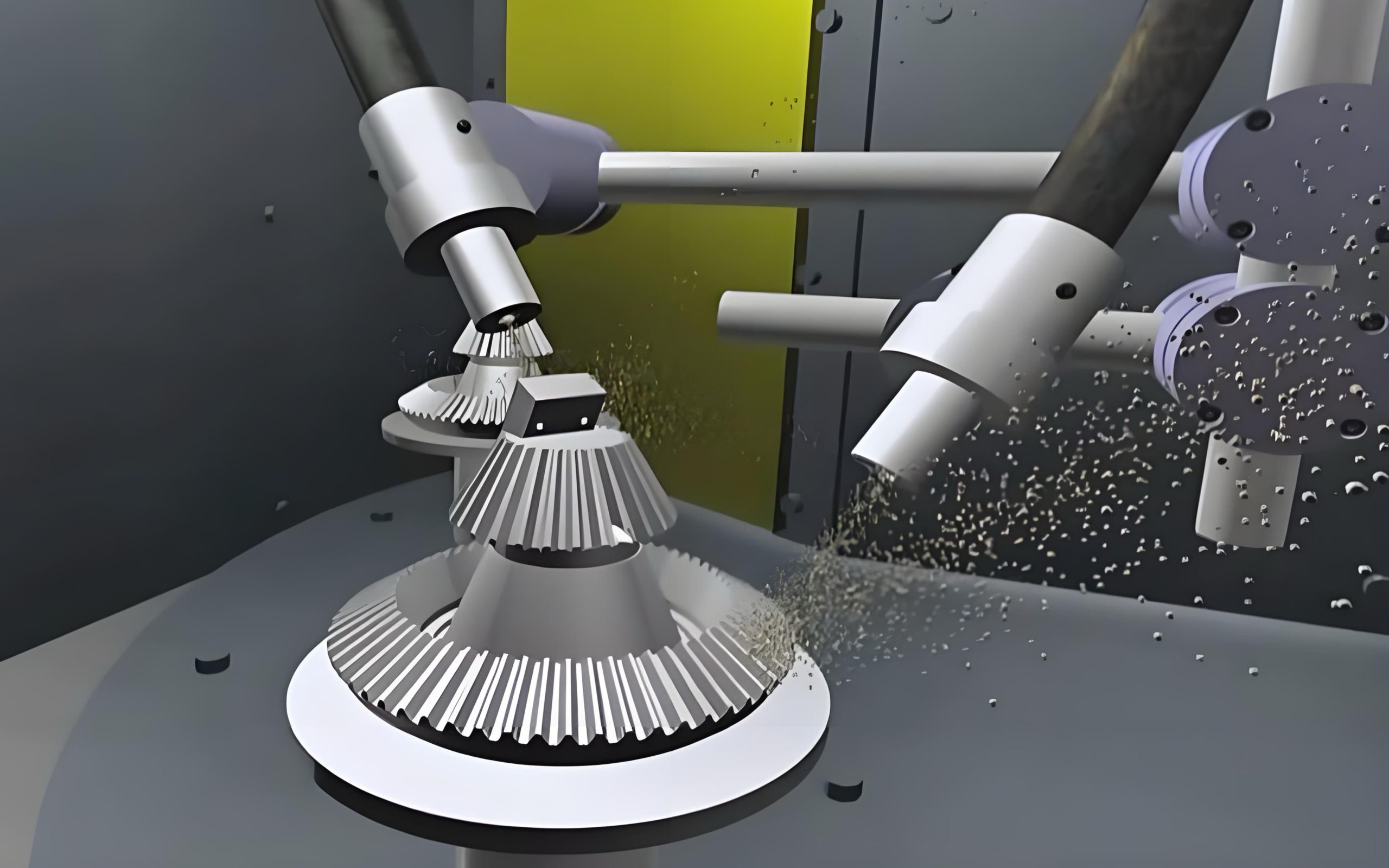
Shot peening diagram
Media for sandblasting and shot peening
The media used in sandblasting and shot peening are important factors affecting the process effect. Although the core goals and application areas of the two are different, choosing the right media is still the key to achieving the ideal surface effect. The following will introduce the commonly used media in sandblasting and shot peening processes respectively, and analyze their characteristics and applicability.
- Sandblasting media
Sandblasting media are mainly used to remove surface oxides, and impurities or prepare an ideal adhesion base for coatings. Depending on the hardness, density, and shape of the material, the sandblasting media will produce different surface roughness and cleaning effects during the spraying process. Here are three main types of sandblasting media and their characteristics:
- Aluminum Oxide Particles: Aluminum Oxide is an extremely hard sandblasting medium suitable for surface treatment of materials such as metals, glass, and ceramics. It has high wear resistance and is suitable for multiple sandblasting cycles. The sharp edges of aluminum oxide particles can effectively remove rust, old paint layers, and other contaminants on metal surfaces, while also providing a high surface roughness, which is particularly suitable for coating pretreatment that requires a rough surface, such as painting or electroplating.
- Glass Beads: Glass Beads are relatively mild sandblasting media that are often used in cleaning or polishing processes that do not damage the underlying surface. Due to its spherical shape, glass beads will not cause deep wear during the blasting process, and are suitable for processing parts with high surface finish requirements such as precision instruments and molds. At the same time, glass beads can also produce a slight polishing effect on metal parts to improve the surface finish.
- Garnet: Garnet is an environmentally friendly and efficient sandblasting medium, the main component of which is the natural mineral garnet. Pomegranate and has strong grinding power and moderate hardness, which is suitable for medium-intensity surface cleaning and coating preparation. Compared with other sandblasting media, pomegranate sand has lower crushing ability and produces less dust, so it is suitable for use in scenarios with high environmental protection requirements, such as ship repair or building surface cleaning.

Garnet
- Shot peening media
The media used in the shot peening process usually have a high hardness and spherical particle structure to ensure that a uniform compressive stress layer can be stably generated under high-speed impact. Commonly used shot peening media are mainly steel shot, ceramic shot, and glass shot, which are suitable for workpieces of different materials and surface strengthening needs.
- Steel shot: Steel shot is a common shot peening medium, mainly used for surface strengthening of steel or other hard metals. The high density and toughness of steel shot enable it to penetrate the surface structure under high-speed impact, produce a uniform and deep compressive stress layer, and effectively enhance the fatigue life of metal parts. Steel shot is suitable for surface strengthening of mechanical parts, automotive transmission systems, and large structural parts, and is widely used in the automotive and construction industries.
- Ceramic Shot: Ceramic Shot is a non-metallic shot peening medium with high hardness and heat resistance. Due to its good chemical stability and non-reaction with metals, ceramic shot is suitable for fields with high material performance requirements such as aerospace and medical devices. For example, difficult-to-process materials such as titanium alloys or nickel alloys are prone to stress concentration under high temperatures and high-pressure environments, and ceramic shot can effectively improve the fatigue resistance of these metals.
Can media be used overlappingly?
In the field of sandblasting and shot peening, some media can indeed be used overlappingly in different processes. However, due to the differences in the core goals of sandblasting and shot peening processes, the effects of media in the two processes are often different. In response to this issue, the following will introduce several common media that can be used for both sandblasting and shot peening, and explore how to optimize the effects of different applications by adjusting process parameters.
- Media that can be used overlappingly
- Glass beads: In the sandblasting process, the spherical particles of glass beads can achieve gentle surface cleaning and polishing without damaging the underlying material of the workpiece, so they are suitable for processing more precise parts. In the shot peening process, glass beads can be used for slight surface strengthening, so that a shallow compressive stress layer is formed on the surface of metal parts, and fatigue resistance is increased. Although glass beads cannot achieve the deep strengthening effect of steel or ceramic shots, in occasions where a high surface finish is required, such as decorative stainless steel parts, glass beads can not only complete polishing but also play a certain strengthening role.
- Ceramic shot: As a sandblasting medium, ceramic shot has moderate hardness and wear resistance, and can produce uniform roughness on the metal surface, thereby increasing the adhesion of the coating. In the shot peening process, ceramic shoots are particularly suitable for high-standard industries such as aviation and medical treatment due to their strong chemical stability and difficulty in reacting with metals. It provides deep strengthening for sensitive metal materials such as titanium alloys and aluminum alloys and enhances their fatigue resistance. By controlling the impact speed and injection pressure, ceramic shoots can achieve both cleaning effects and surface strengthening requirements.
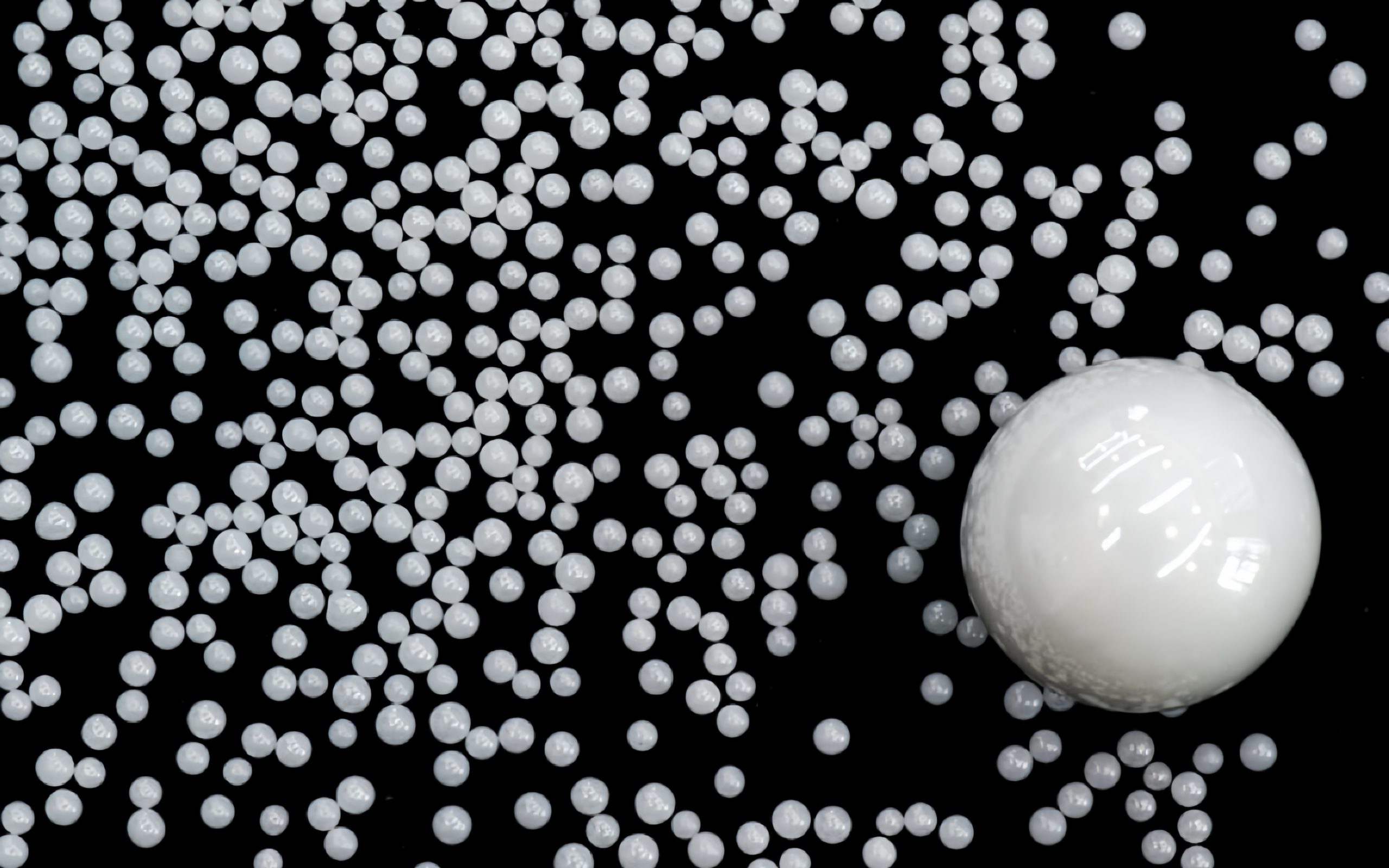
HLH's Ceramic Peening Beads
- Steel shot: In sandblasting applications, the high hardness of steel shot enables it to quickly remove stubborn dirt or oxide layers, which is suitable for heavy surface cleaning and is commonly seen in steel structures or hull surface treatment. As a shot peening medium, steel shot, with its density and toughness, can penetrate deep into the metal surface under high-speed impact, forming a deep compressive stress layer, greatly improving the metal’s fatigue resistance. Therefore, in some heavy industries and construction fields, steel shot can be used as a surface cleaning medium and can also provide effective surface strengthening for structural parts.
- How to adjust process parameters to meet different needs?
Although some media can be used in sandblasting and shot peening, different process goals often require adjustment of the blasting parameters to optimize the process effect. The following are some common parameter adjustment suggestions:
- Blasting pressure: In the sandblasting process, a lower blasting pressure is usually used to achieve a gentle cleaning or surface polishing effect. In shot peening, a higher blasting pressure helps the medium penetrate deep into the metal surface and form compressive stress. Therefore, if the same medium is used for sandblasting and shot peening, adjusting the blasting pressure is the key to achieving different surface effects.
- Blasting angle: The blasting angle of sandblasting and shot peening will also affect the surface treatment effect. Sandblasting generally uses a more inclined blasting angle to achieve a more uniform cleaning or surface roughening effect, while shot peening is usually sprayed at a vertical angle to ensure uniform distribution of compressive stress. Therefore, properly adjusting the spray angle can better utilize the characteristics of the media in process conversion.
- Particle size: The size of the media particles directly affects the spraying effect. In sandblasting, smaller particles can produce a delicate polishing effect, while in shot peening, larger particles are more suitable for forming deep compressive stress. Therefore, by selecting the right particle size, a more precise surface treatment effect can be achieved.
We have written an article about the operation process,please click to view
The scientific basis for media selection
When selecting sandblasting or shot peening media, the scientific basis is mainly based on the following factors: material properties, process goals, environmental requirements, and economics. A deep understanding of these factors can help optimize process effects, extend equipment life, and ensure the sustainability of processing.
- Material properties
Different materials have different requirements for sandblasting and shot peening. Harder metal materials (such as steel and nickel alloys) usually require high-density and high-hardness media (such as steel shots or ceramic shots) to achieve deep surface strengthening effects. For softer or brittle materials (such as aluminum, glass, or plastics), lower-density and moderately hard media (such as glass beads or nylon particles) should be used to avoid excessive damage to the material surface. The matching between material hardness and medium hardness is an important prerequisite for ensuring the quality of surface treatment.
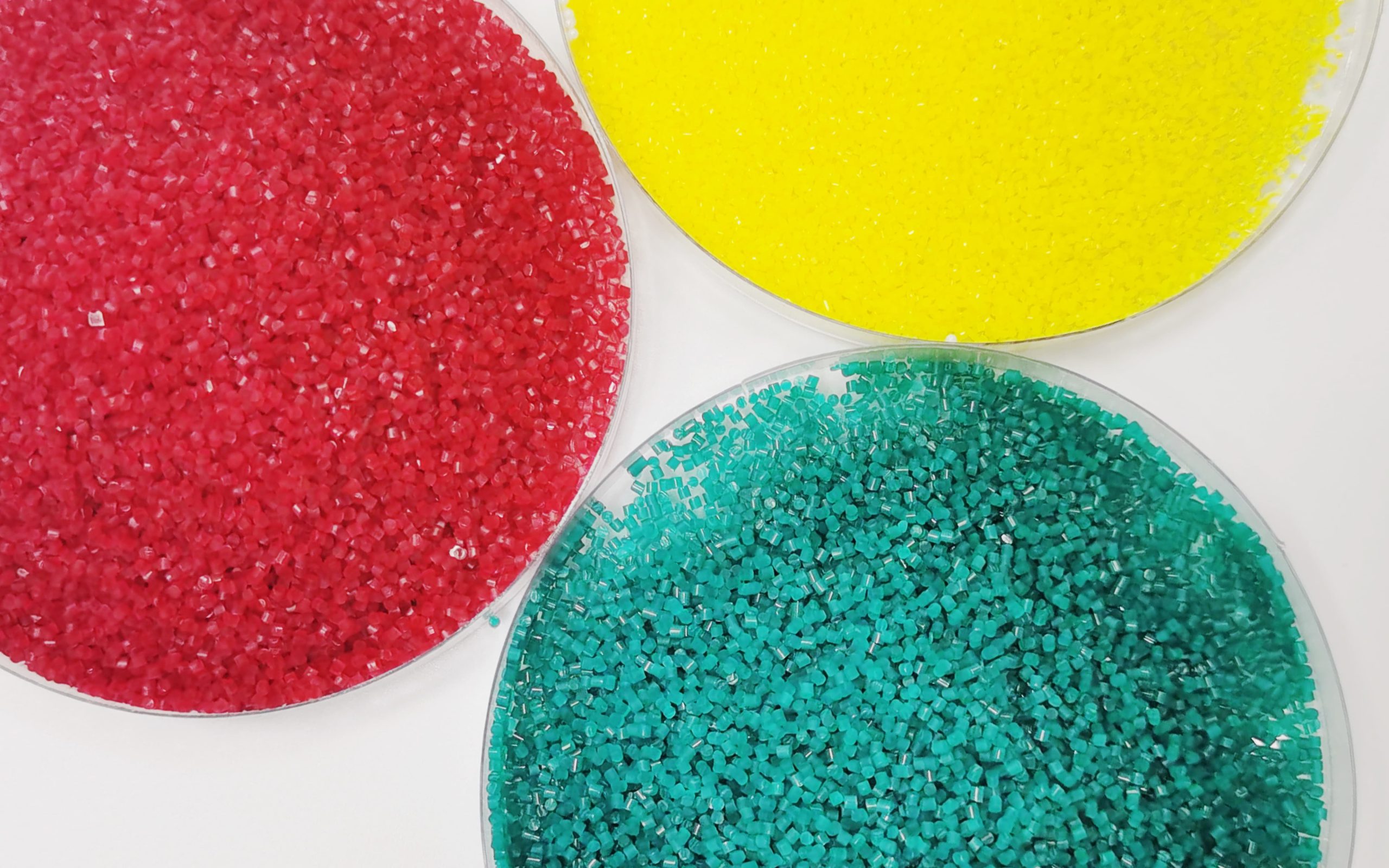
HLH Nylon Granules
- Process objectives
The process objectives determine the type and characteristic requirements of the medium. For example:
- Surface cleaning: If the purpose is to remove the oxide layer or dirt, choose a harder medium, such as alumina sand or steel shot, which can effectively remove stubborn substances on the surface. At the same time, the multi-angle design of alumina sand can enhance the cleaning efficiency.
- Surface polishing: For workpieces that require polishing, choosing spherical media such as glass beads can achieve a gentle and uniform surface effect, which is suitable for precision parts such as stainless steel and aluminum alloy.
- Strengthening treatment: For workpieces that need to improve fatigue resistance, such as aviation and automotive parts, shot peening with high-density media such as steel shot or ceramic shot can form a compressive stress layer on the surface and improve fatigue life.
- Enhanced coating adhesion: Roughening the workpiece surface before spraying can increase the adhesion of the coating. Alumina sand and ceramic sand can effectively improve the surface roughness of the workpiece and make the coating more solid through their rough particle shape and high hardness.
- Environmental requirements
The selection of media also needs to consider environmental impact. For example, in the surface treatment of medical devices and food processing equipment, avoid using harmful metals or chemical components such as lead or chromium. In this case, inert and biocompatible media such as ceramic shots or glass beads can be used to ensure that there is no impact on the environment or human health.
For environments with explosive risks, such as the oil and gas industry, avoid using metal media to reduce the risk of sparks. Therefore, non-metallic media such as alumina sand, glass beads, and plastic particles are more suitable for these occasions.
- Economic efficiency
Economic efficiency is also an important consideration in media selection. Steel shot and ceramic shot have high recycling capacity, which is suitable for reducing costs in large-scale industrial applications. Although disposable alumina sand has a lower cost, it may increase the amount of use due to the low recycling rate, so it may be economically suitable for small-scale, short-term needs.
For equipment that needs to run for a long time, choosing wear-resistant and recyclable media can reduce the frequency of equipment maintenance and downtime. By evaluating the cost-effectiveness of the media, companies can control the budget while meeting process needs.

Comparison of economic benefits of some common products
Actual application case analysis
Actual application cases can help better understand the differentiated applications of sandblasting and shot peening in various industries and demonstrate the importance of scientifically selecting the right media. The following application analysis of several industries will illustrate how to achieve the best surface treatment results under different requirements.
- Automobile Manufacturing
In the vehicle repair and painting process, sandblasting is used to remove rust and old paint layers on the surface of the frame and body to improve the appearance and corrosion resistance of the vehicle and increase the market appeal of the body. Shot peening is used in the processing of parts such as transmission gears and suspension springs. Since these parts are subject to repeated loads during driving, they need to improve fatigue resistance. Shot peening of steel shots can form a compressive stress layer, which significantly extends its service life. Through shot peening, the durability of the transmission system is improved, thereby extending the overall service life of the vehicle.
- Energy and Power Industry
The gas turbine blades and boiler pipes in the power industry are subjected to high temperatures and high pressures during operation. Shot peening with ceramic shots can improve the resistance of high-temperature parts to stress corrosion cracking and extend the trouble-free operation time of the equipment. At the same time, the sandblasting process is used for surface cleaning of large pipelines and equipment to remove oxide layers and oil stains, which facilitates subsequent maintenance of the equipment and coating adhesion. High-hardness sandblasting media such as alumina sand are suitable for cleaning these metal surfaces, ensuring fineness and efficiency during the process.
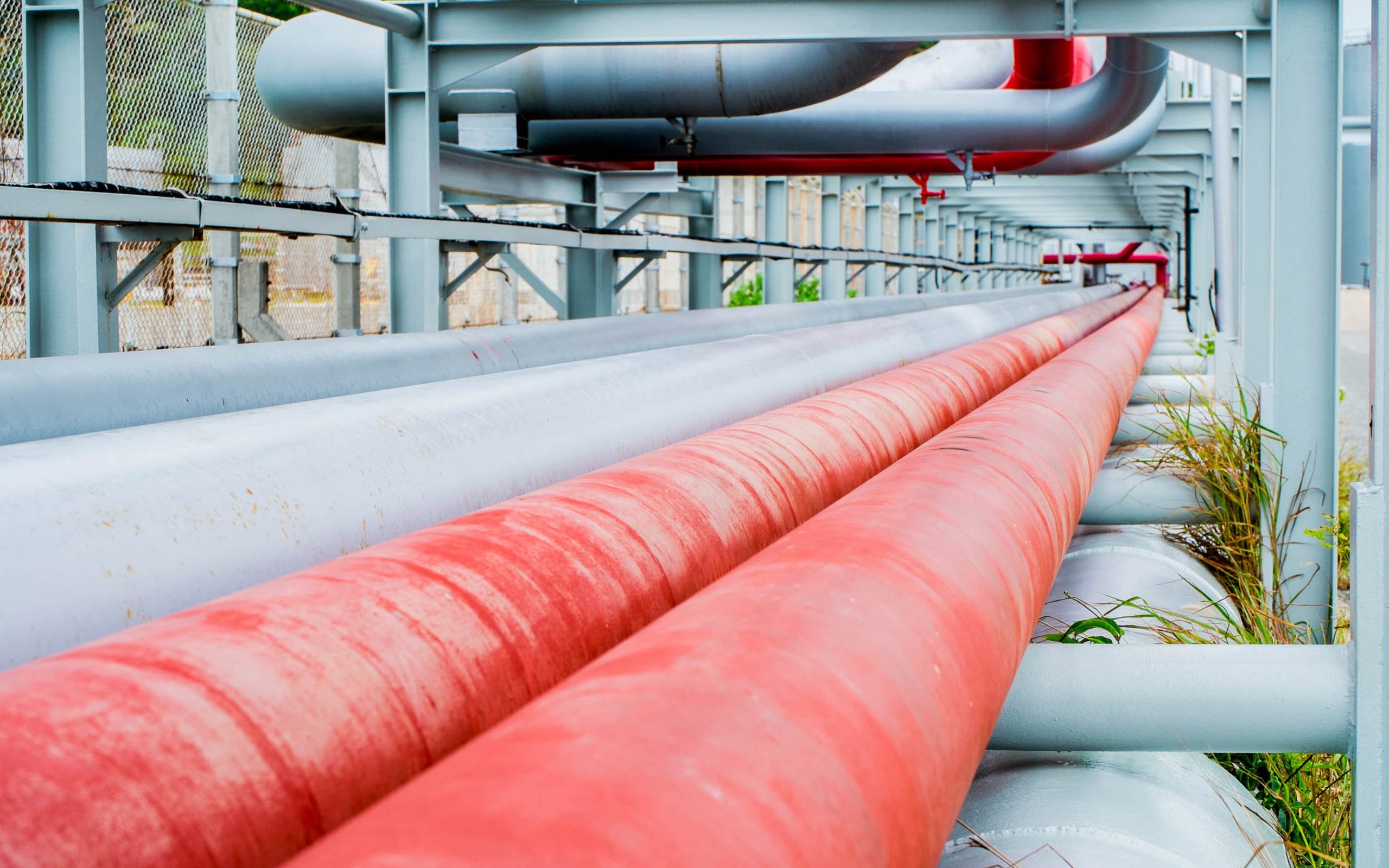
Large pipes require regular maintenance
- Medical equipment manufacturing
For medical devices that need to be implanted in the body, such as artificial joints and dental implants, the sandblasting process can remove tiny surface defects and improve the smoothness of the surface. Commonly used media are glass beads and ceramic sand to ensure biocompatibility. In terms of enhancing the fatigue resistance of implants, the shot peening of ceramic balls can increase the surface compressive stress layer without changing its shape, thereby improving its fatigue resistance and life, and better adapting to the dynamic environment in the human body.
Technology Frontier Development
- New sandblasting media
In the development of sandblasting technology, the research on lightweight and environmentally friendly materials has gradually become a trend. For example, the introduction of renewable ceramic media not only reduces the weight of the material but also effectively reduces the dust generated during the sandblasting process. The use of this new material not only improves cleaning efficiency but also contributes to environmental protection.
Laser shot peening technology is an upgraded method of traditional shot peening. It can precisely control the hardness and thickness of the material and is particularly suitable for applications with high-performance requirements such as aircraft engines and deep-sea equipment. Laser shot peening uses a high-energy laser beam to form tiny pressure pulses on the surface of the material to achieve more detailed and efficient surface treatment, which not only improves the fatigue strength of the material but also effectively extends its service life, promoting the development of high-end manufacturing.
- Intelligent monitoring technology
With the progress of Industry 4.0, intelligent monitoring technology has also been gradually applied to sandblasting and shot peening processes. Through the digital monitoring system, parameters such as pressure, speed, and spray angle during sandblasting can be monitored in real-time. This high-tech monitoring method not only improves the accuracy and consistency of sandblasting and shot peening, but also automatically adjusts the sandblasting conditions according to different materials and process requirements to meet the strict requirements of the precision industry. The popularization of this technology will greatly improve production efficiency and product quality, and help companies maintain their advantages in competition.
In summary, there are significant differences between sandblasting and shot peening in terms of core principles and applications. The selection of appropriate media and processes must be based on scientific basis and actual needs. Looking to the future, with the continuous advancement of technology and the deepening of application, sandblasting and shot peening technology will be widely used in more high-end manufacturing fields. Enterprises should actively follow up these cutting-edge technologies and rationally select suitable sandblasting processes and media to ensure success in the fierce market competition. By combining new technologies, enterprises can not only improve product quality but also better meet customer needs and promote the industry to a higher level.



